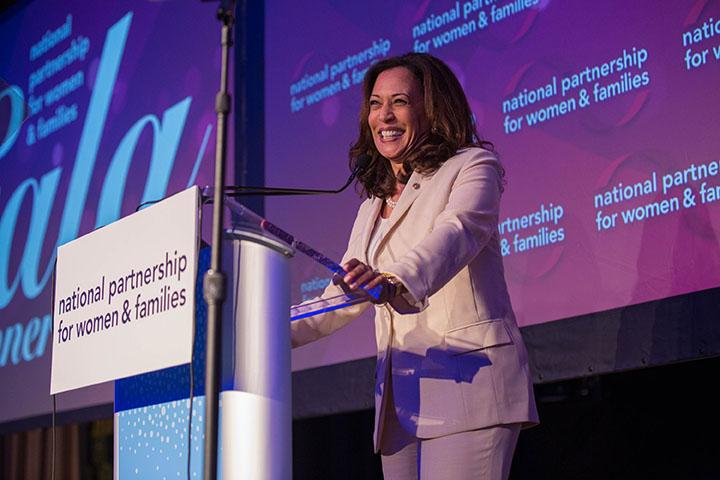By Jessica Mason and Katherine Gallagher Robbins
Thanks to the Pregnant Workers Fairness Act (PWFA) – enacted by a strong bipartisan majority just over two years ago – pregnant workers are guaranteed the right to reasonable, temporary accommodations they may need to protect their health. The law ensures that pregnant workers are entitled to basic, reasonable accommodations, such as carrying a water bottle or being able to sit instead of stand. The PWFA means these workers are better able to stay on the job so they don’t lose income or job-related benefits such as paid family and medical leave or health insurance at a time when they and their families need them most.
Despite strong bipartisan support for the passage of the PWFA, the law is under threat. The state of Texas sued to overturn the law itself, Louisiana and Mississippi successfully sued to only enforce the law selectively and 17 state attorneys general sued the Equal Employment Opportunity Commission in an attempt to overturn the strong final rule implementing the law. While the previous administration defended the law and rules from spurious attacks, pregnant workers are also threatened by the Trump administration’s efforts to undercut the Equal Employment Opportunity Commission (EEOC), the agency in charge of enforcing the PWFA and other key anti-discrimination laws. The Trump administration has already attempted to unlawfully fire two EEOC commissioners.
Every pregnant worker, no matter where they live or what kind of job they hold, deserves to be safe and supported in their workplace. But National Partnership for Women & Families analysis finds that efforts to overturn or undercut the enforcement of the PWFA puts 2.8 million pregnant workers at risk – the majority of pregnant women nationwide, including majorities of Black, brown and white women, and the majority in every state. Our analysis shows that the majority of pregnant women were employed in the year they were pregnant, including:
- Nearly three-quarters of pregnant Black women
- Nearly three-quarters of pregnant white women
- More than seven in ten pregnant multiracial women
- More than two-thirds of pregnant Asian American, Native Hawaiian and Pacific Islander (AANHPI) women
- More than six in 10 pregnant Latina women
- Six in 10 pregnant American Indian and Alaska Native (AI/AN) women
- More than half of pregnant women with a disability
- More than half of those who are economically insecure
We also find that nearly 1.1 million pregnant women workers – including 488,800 pregnant women workers of color – live in the 20 states that are actively working to undermine the PWFA (states are marked with * in Appendix Tables 1 and 2).
Across the Country, a Growing Majority of Women Work for Pay While Pregnant
The share of pregnant women who work is higher than it was two decades ago. This number rose steadily between 2010 through 2020, dipped during the height of the pandemic, and as of 2023, was at more than 72 percent. And in every state, including the District of Columbia, more than six in 10 pregnant women work for pay in the year they are pregnant. That share rises to 80 percent or more in six states (Vermont, Minnesota, New Hampshire, Rhode Island, Nebraska, and North Dakota). (See Appendix Table 1.)
Pregnant workers make up a small share of the overall workforce – about 1.6 percent on average. In only two states – North and South Dakota – do pregnant workers reach 2.0 percent of the workforce. That means that while pregnancy accommodations are critically important for pregnant workers, the impact on any individual employer is small in any given year, particularly since not every pregnant worker will need a workplace accommodation.
We also analyzed the number of pregnant women in the workforce in each state, where data allow, by major racial and ethnic group, as well as for disabled and economically insecure pregnant women. (See Appendix Table 2.) For example, in states working to undermine the law:
- In Tennessee, an estimated 11,100 pregnant Black women are in the workforce each year, as are 18,700 economically insecure pregnant women.
- In Oklahoma, an estimated 2,500 pregnant Native women are in the workforce each year, as are 4,600 pregnant Latinas, 3,200 pregnant Black women and about 3,700 pregnant multiracial women.
- In Louisiana, an estimated 15,100 pregnant Black women each year are in the workforce, as are 2,200 pregnant disabled women and 15,500 pregnant economically insecure women.
Pregnant Workers Need a Strong EEOC to Protect Their Rights and Jobs
The PWFA guarantees critical rights for pregnant workers, especially when a strong EEOC has their backs. It’s the job of this federal agency to ensure pregnant workers know about their rights, and to help employers understand their responsibilities. When that’s not enough, when a worker thinks their rights have been violated, the EEOC has the power to investigate and enforce the law. That’s why nearly 3 million pregnant workers rely on an independent EEOC with the staff, leadership and funding to do its job right.
Pregnant workers in all states benefit from the PWFA. While some states have state-level laws providing accommodations for pregnant workers, the federal law enforced by the EEOC provides a stronger nationwide standard that benefits all pregnant workers by providing an additional layer of protection and avenue for workers to find relief. The PWFA helps prevent employers in every state from forcing pregnant people out of the workplace and helps ensure that employers provide reasonable accommodations to pregnant workers. As a result, the PWFA prevents both the harm of economic insecurity, as well as workplace conditions that are harmful during pregnancy, supporting healthy birth outcomes.
Pregnant workers’ need for accommodations – and the harms they may face if unable to access accommodations – are particularly important for certain groups because of the ways that racism, sexism and ableism have structured the United States economy. Many jobs that women and people of color are especially likely to be in are physically difficult or dangerous and lack adequate health and safety protections, putting them at risk for adverse pregnancy outcomes. Having to work in conditions without proper accommodations compromises the health of pregnant workers and their pregnancies. This is one driver of the maternal and infant health crises that particularly harms people of color, especially Black and Indigenous communities. Further, because they are more likely to experience employment discrimination, have lower incomes and face racial and gender wage and wealth gaps, pregnant people of color, pregnant people with disabilities and pregnant trans and nonbinary people have fewer resources to fall back on if pushed out of a job.
The Pregnant Workers Fairness Act protects nearly 3 million pregnant workers each year from the impossible choice between keeping their livelihoods or having a safe and healthy pregnancy. States must defend pregnant workers’ rights and Congress must ensure the law is fully implemented and strongly enforced.
Acknowledgments: Significant contributions to this brief were made by Amani Echols, Shaina Goodman, Sharita Gruberg, Mettabel Law, Erin Mackay, Jake McDonald, Carol Sakala, Cristina Toppin and Gail Zuagar.
Methodological note: This analysis uses the 2018-2022 American Community Survey (ACS) accessed via IPUMS USA, University of Minnesota, www.ipums.org. We use a five-year dataset to create the demographic profiles in order to have a sufficient sample size to analyze state-level data. For the analysis over time of the share of pregnant workers we use one-year ACS data files from 2001-2023. Data limitations do not permit an estimate of individuals who were employed during the months of pregnancy; in this analysis, pregnant workers are those who reported having given birth during the previous year and having worked for pay or profit during the previous year. Racial categories in this analysis exclude women who identify as Latina and/or Hispanic, who are analyzed separately. Due to data limitations, this analysis does not include people who do not identify as women but may become pregnant, including transgender men and nonbinary people. Women in this analysis are ages 16-50 due to data constraints. People are identified as having a disability in this analysis if they responded that they have difficulty in one or more of the following realms: vision, hearing, cognitive, ambulatory, self care, and independent living. This is a limited definition of disability that excludes a portion of disabled people. For more information on how disability is measured in the American Community Survey please see U.S. Census Bureau, (2021, November 2). How Disability Data are Collected from The American Community Survey. While people across the income spectrum may have difficulty making ends meet, in this analysis we define “economically insecure” as living in a family below 200 percent of the federal poverty line. Shares are based on unrounded data.
Appendix Table 1.
Appendix Table 2.

